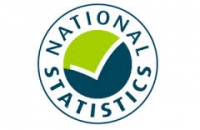Unemployment Figures Stay Steady - Main points for June to August 2016
Wednesday 19 October, 2016 Written by Simon Collyer
Between March to May 2016 and June to August 2016, the number of people in work and the number of unemployed people increased. The number of people not working and not seeking or available to work (economically inactive) fell.
There were 31.81 million people in work, 106,000 more than for March to May 2016 and 560,000 more than for a year earlier.
There were 23.23 million people working full-time, 362,000 more than for a year earlier. There were 8.58 million people working part-time, 198,000 more than for a year earlier.
The employment rate (the proportion of people aged from 16 to 64 who were in work) was 74.5%, the joint highest since comparable records began in 1971.
There were 1.66 million unemployed people (people not in work but seeking and available to work), 10,000 more than for March to May 2016 but 118,000 fewer than for a year earlier.
There were 891,000 unemployed men, 12,000 fewer than for March to May 2016 and 81,000 fewer than for a year earlier.
There were 765,000 unemployed women, 23,000 more than for March to May 2016 but 37,000 fewer than for a year earlier.
The unemployment rate was 4.9%, unchanged compared with March to May 2016 but down from 5.4% for a year earlier. The unemployment rate is the proportion of the labour force (those in work plus those unemployed) that were unemployed.
There were 8.81 million people aged from 16 to 64 who were economically inactive (not working and not seeking or available to work), 65,000 fewer than for March to May 2016 and 231,000 fewer than for a year earlier.
The inactivity rate (the proportion of people aged from 16 to 64 who were economically inactive) was 21.5%, the joint lowest since comparable records began in 1971.
Average weekly earnings for employees in Great Britain in nominal terms (that is, not adjusted for price inflation) increased by 2.3% both including and excluding bonuses compared with a year earlier.
2.Summary of latest labour market statistics
Table 1 and Figure 1 show the latest estimates, for June to August 2016, for employment, unemployment and economic inactivity and shows how these estimates compare with the previous quarter (March to May 2016) and the previous year (June to August 2015). Comparing the estimates for June to August 2016 with those for March to May 2016 provides the most robust short-term comparison. See Section 3 of this statistical bulletin for more information.
Table 1: Summary of UK labour market statistics for June to August 2016, seasonally adjusted
| Number (thousands) | Change on Mar to May 2016 | Change on Jun to Aug 2015 | Headline Rate (%) | Change on Mar to May 2016 | Change on Jun to Aug 2015 | |
| Employed | 31,811 | 106 | 560 | |||
| Aged 16 to 64 | 30,583 | 84 | 493 | 74.5 | 0.1 | 0.9 |
| Aged 65 and over | 1,228 | 22 | 67 | |||
| Unemployed | 1,656 | 10 | -118 | 4.9 | 0.0 | -0.4 |
| Aged 16 to 64 | 1,640 | 17 | -110 | |||
| Aged 65 and over | 16 | -7 | -8 | |||
| Inactive | 19,004 | -29 | -83 | |||
| Aged 16 to 64 | 8,809 | -65 | -231 | 21.5 | -0.2 | -0.6 |
| Aged 65 and over | 10,196 | 36 | 147 | |||
| Source: Office for National Statistics | ||||||
|
Notes:
|
||||||
|
1. Calculation of headline employment rate: Number of employed people aged from 16 to 64 divided by the population aged from 16 to 64. Population is the sum of employed plus unemployed plus inactive.
|
||||||
|
2. Calculation of headline unemployment rate: Number of unemployed people aged 16 and over divided by the sum of employed people aged 16 and over plus unemployed people aged 16 and over.
|
||||||
|
3. Calculation of headline economic inactivity rate: Number of economically inactive people aged from 16 to 64 divided by the population aged from 16 to 64. Population is the sum of employed plus unemployed plus inactive.
|
||||||
| 4. Components may not sum exactly to totals due to rounding. | ||||||
Leave a comment
Make sure you enter all the required information, indicated by an asterisk (*). HTML code is not allowed.
Join
FREE
Here










